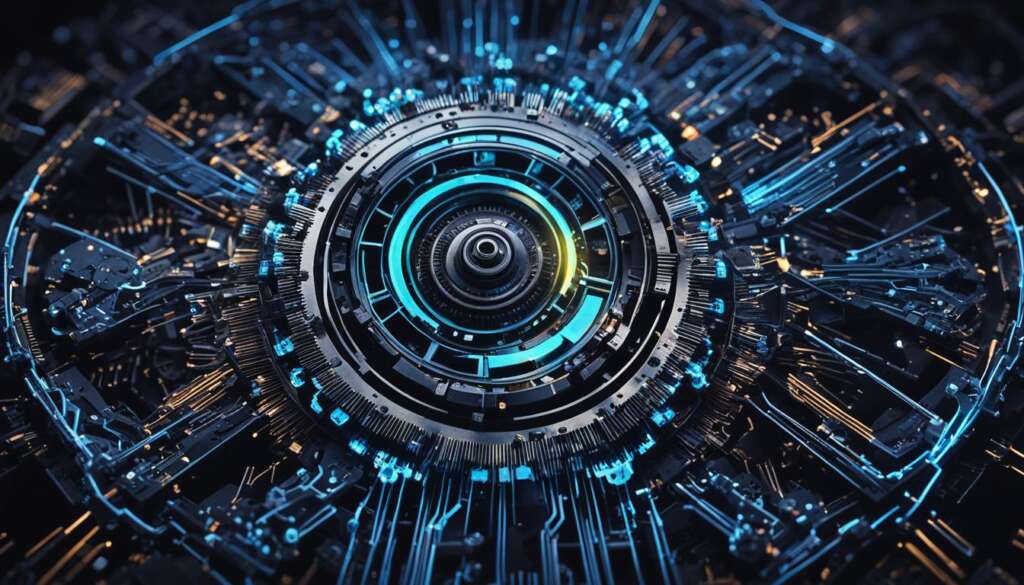Table of Contents
ChatGPT is an AI application developed by OpenAI that utilizes the power of GPT language models. The underlying algorithms, GPT-3.5 Turbo and GPT-4, enable ChatGPT to perform tasks such as answering questions, writing copy, drafting emails, translating natural language to code, and more. It is a chatbot that uses natural language prompts to generate human-like responses. ChatGPT has gained popularity for its simplicity and availability to a wide range of users.
How does ChatGPT work?
ChatGPT operates by harnessing the power of two advanced algorithms: GPT-3.5 Turbo and GPT-4. These algorithms are part of the renowned GPT models developed by OpenAI, which serve as the backbone of the ChatGPT language engine.
At its core, ChatGPT is built upon a deep learning neural network that employs self-attention and transformer architecture. This neural network is trained on vast amounts of text data collected from the internet, enabling it to grasp intricate patterns and relationships in language.
The secret behind ChatGPT’s ability to generate coherent responses lies in its enormous size and complexity. With billions of parameters, it possesses an unparalleled understanding of context, allowing it to mimic human-like text generation with astonishing accuracy.
ChatGPT’s language engine leverages the power of GPT-3.5 Turbo and GPT-4, incorporating state-of-the-art neural network techniques such as self-attention and transformer architecture.” – OpenAI
During the training process, ChatGPT learns how to interpret input prompts and generate relevant and contextually appropriate responses. By analyzing the relationships between words and phrases, the neural network infers meaning and crafts text that aligns with the given prompt.
Through the fusion of GPT-3.5 Turbo and GPT-4, ChatGPT attains an exceptional understanding of language nuances, enabling it to communicate naturally and intelligently in various contexts. This sophisticated language model has positioned ChatGPT as a leading AI chatbot in the industry.
ChatGPT’s Key Features
| Feature | Description |
|---|---|
| Advanced Algorithms | Utilizes GPT-3.5 Turbo and GPT-4 |
| Neural Network Architecture | Deep learning model with self-attention and transformer architecture |
| Training Data | Massive amounts of internet text data |
| Coherent Text Generation | Produces human-like, contextually relevant responses |
| Contextual Understanding | Grasps the intricacies of language and context |
ChatGPT’s remarkable ability to comprehend and generate text has revolutionized the way we interact with AI-powered systems. Its unmatched language capabilities make it a valuable tool for a wide range of applications, from customer support to content generation and beyond.
The Power of ChatGPT and its Impact
To maximize the effectiveness and address user requirements, ChatGPT undergoes a meticulous fine-tuning process. This involves gathering valuable human feedback and leveraging reinforcement learning from human feedback (RLHF) to enhance the model’s performance. By continuously refining its responses, ChatGPT ensures that it provides safe, sensible, and coherent interactions with users.
However, it is important to acknowledge that ChatGPT has certain limitations. These include the potential lack of helpfulness in some responses, the occurrence of hallucinations where the model generates incorrect or nonsensical information, interpretability challenges that make it difficult to understand the model’s decision-making process, and the risk of producing toxic or biased content in certain situations.
Despite these limitations, the real-world applications of ChatGPT are vast and diverse. The model’s ability to generate content, facilitate language translation, support customer service interactions, and assist with creative writing showcases its versatility. Furthermore, the automation of tasks that were previously performed by humans has the potential to impact jobs, optimizing efficiency and allowing human resources to be allocated to more strategic and complex activities.
As organizations fine-tune and optimize the implementation of ChatGPT in various industries, it is crucial to consider the potential ramifications and ensure responsible usage. By striking a balance between leveraging the model’s capabilities and addressing its limitations, the impact of ChatGPT can be harnessed to bring about positive transformations in numerous fields.
Evolution of ChatGPT and Future Developments
ChatGPT is part of the ongoing evolution of GPT models, including GPT-1, GPT-2, GPT-3, and InstructGPT. With each iteration, OpenAI has harnessed advancements in computational power to train larger models with diverse knowledge bases and expanded capabilities.
The future holds exciting prospects for ChatGPT, with the integration of multimodal capabilities at the forefront. This development will enable the model to combine both text and images, enhancing its understanding and generation of responses. By incorporating visual elements, ChatGPT will be better equipped to provide more comprehensive and nuanced interactions.
OpenAI’s commitment to pushing the boundaries of AI technology ensures that ChatGPT will continue to undergo improvements and updates in the coming years. These future developments will further enhance its performance, making it even more sophisticated and valuable in various domains.
FAQ
What is ChatGPT and how does it work?
ChatGPT is an AI application developed by OpenAI that uses the power of GPT language models to perform tasks such as answering questions, writing copy, translating natural language to code, and more. It works by leveraging the GPT-3.5 Turbo and GPT-4 algorithms, which are deep learning neural networks that use self-attention and transformer architecture to generate human-like responses based on input prompts.
What is the training process for ChatGPT?
ChatGPT is trained by exposing the models to vast amounts of text data from the internet, allowing them to learn patterns and relationships in the text. The models have billions of parameters and are capable of understanding context and generating coherent text. To improve performance, ChatGPT undergoes a fine-tuning process that involves gathering human feedback and leveraging reinforcement learning from human feedback (RLHF).
What are the limitations of ChatGPT?
ChatGPT does have certain limitations, including potential lack of helpfulness, hallucinations, interpretability challenges, and the risk of toxic or biased content. However, it has a wide range of real-world applications, such as content generation, language translation, customer support, and creative writing.
How does ChatGPT impact jobs?
ChatGPT has the potential to automate certain tasks previously done by humans, which could impact jobs in various industries. However, it also opens up new opportunities and can enhance productivity and efficiency in many areas.
What is the evolution of ChatGPT and what are future developments?
ChatGPT is part of the evolving lineage of GPT models, and each iteration has capitalized on advancements in computational power to train larger models with expanded capabilities. Future developments include the integration of multimodal capabilities, combining text and images to enhance the model’s understanding and generation of responses. OpenAI continues to push the boundaries of AI technology, so further improvements and updates to ChatGPT can be expected in the coming years.













